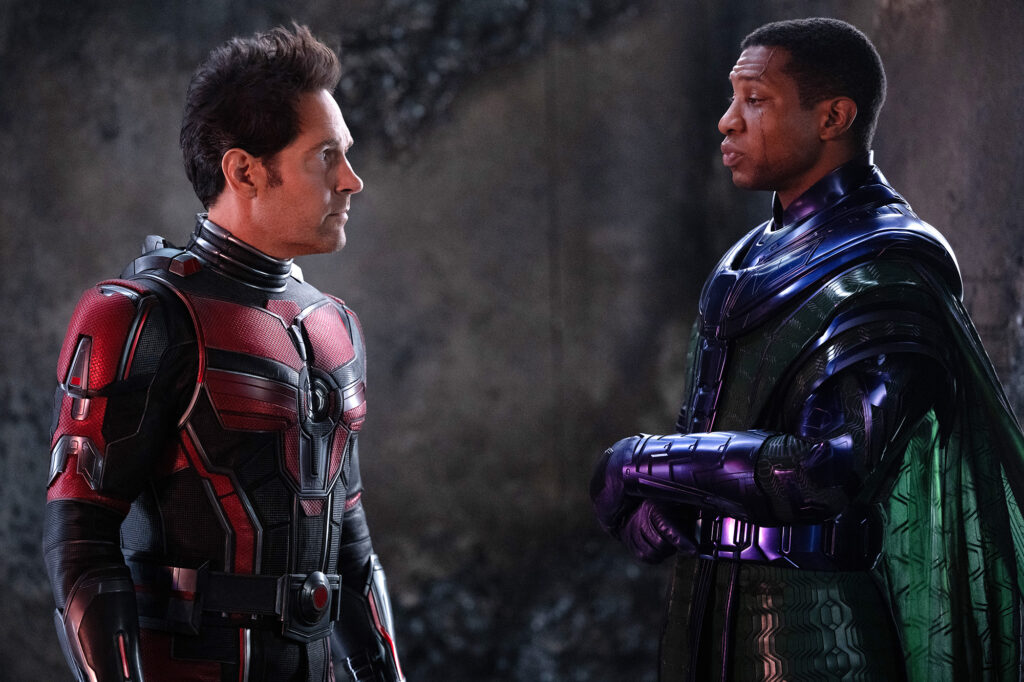
The implicit assumption underlying the Marvel Cinematic Universe—the notion meant to infuse it with relatability and heft as well as imagination and excitement—is that its movies (and TV shows) take place in our own world. A fantastical version of our world, sure, but ours nonetheless; for every talking raccoon, purple titan, and junkyard planet, there’s a Los Angeles mansion, a Queens tenement, and an Oakland basketball court. The idea is that, while the narratives feature costumed superheroes and magic weapons, the characters’ behaviors and desires remain rooted in recognizable human experience. Sokovia may not be a real county, but the Washington Monument is at least a real building.
What’s potentially interesting about Ant-Man and the Wasp: Quantumania—the third movie centering on Paul Rudd and Evangeline Lilly as the titular insects (he’s the ant, she’s the wasp), and the gazillionth 31st big-screen installment in the MCU’s history (not to mention the first of Phase Five, whatever that means)—is that the vast majority of its action doesn’t take place on Earth at all. It doesn’t take place in outer space either, or on any other faraway planet. It instead mostly transpires in the Quantum Realm, a microscopic land full of alien life forms, misshapen creatures, and animate vegetables. And so, unbound by the usual obligation to chain his fanciful hijinks to the deadweight of realism, the director Peyton Reed (working with the screenwriter Jeff Loveness) appears to have stumbled into the rarest of opportunities: the chance to a make a mass-market superhero movie that’s genuinely weird.
That Reed hasn’t fully capitalized on this prospect—that he’s delivered a product more familiar than fresh—is as much a matter of commercial responsibility as artistic failure. Despite its putative promise of offering something different, Quantumania dutifully conforms to the franchise’s scrupulously engineered blueprint. There are stale jokes, sexless kisses, glum villains, mid-credits teases, and a numbing climax polluted with sloppy special effects. In other words: Sweet, another Marvel movie! But at times, in between the cacophonous action and the lazy dialogue, Reed sprinkles in touches that are gratifying in their strangeness. The MCU has spent the past decade and a half honing its formula so efficiently that it’s threatened to iron out all vestiges of creative personality, which is why the most memorable material here is the stuff that doesn’t make any sense.
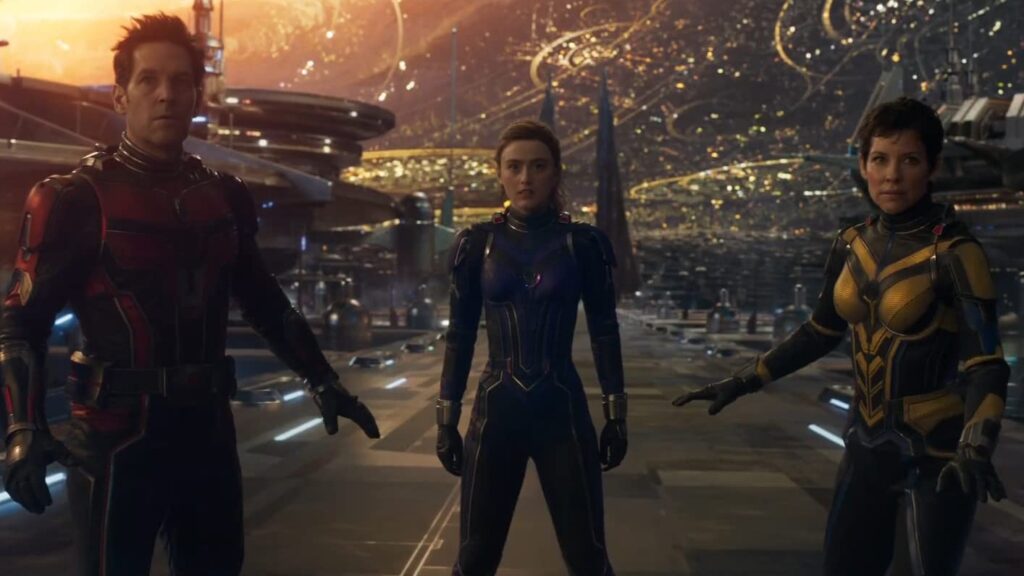
At one point, Scott Lang—that’s Ant-Man in human form, in case you’re new here—needs to Get To A Thing. The goal of obtaining a MacGuffin is less than novel, but here Scott finds himself enmeshed in a “probability storm”—a void in space where his every action spawns a different version of himself, resulting in an exponential cascade of costumed facsimiles. (One variant ditches Scott’s standard superhero duds for his old Baskin-Robbins uniform, prompting another duplicate to ask, “Do you have any ice cream?”) As someone else describes it, “You’re in Schrödinger’s box, and you’re the cat.” I’m not sure that analogy is philosophically sound, and visually speaking the sequence is vague and amorphous, but conceptually it’s at least new.
Newness is a precious commodity in the MCU, and for a time Quantumania’s immersion into a bizarre subatomic universe feels like a welcome vacation from the requisite intergalactic drudgery. After inexplicably yanking his central characters—in addition to Scott and his girlfriend, Hope Van Dyne (Lilly), they include Hope’s parents, Janet (Michelle Pfeiffer) and Hank (Michael Douglas), along with Scott’s teenage daughter, Cassie (now played by the accomplished Kathryn Newton)—into the quantum realm, Reed briskly sets about mapping the contours of their distorted surroundings. But while there’s a slight exoticism to this miniature colony—the color scheme favors a blue-and-purple tint, and there are lots of desolate and rocky outcroppings—its governing aesthetic isn’t all that different from the various worlds visited by the Guardians of the Galaxy or the Avengers. We meet some eccentric new characters played by overqualified actors—William Jackson Harper is a perpetually irritated telepath, while Bill Murray(!) shows up as a smiling politician with a sinister agenda—but the busy, buzzy glow of initial discovery gradually fades into the customary sight of computer-generated tedium.
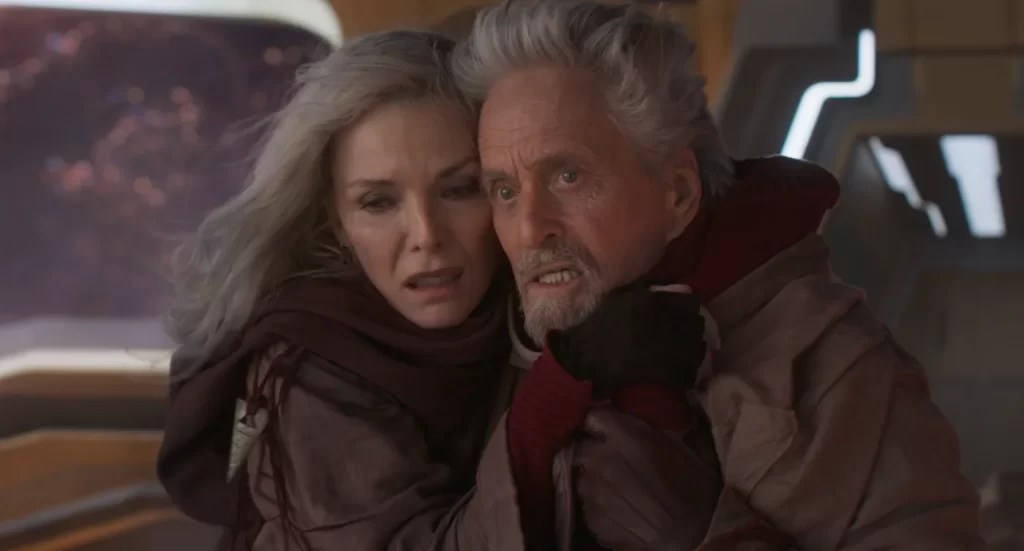
Reed indulges in a few moments of zany anthropological exploration—I didn’t love the globby alien obsessed with holes, but I did enjoy the sentient cocktail garnish magically swelling in size, turning consumer into cowerer—but he’s also compelled to make room for Quantumania’s standard-issue plot, which plays like a curious cross between Honey I Shrunk the Kids and Return of the Jedi. Despite their threatening appearance and aggressive-sounding language (in a nifty touch, our heroes can communicate with their newfound companions once they imbibe a slimy red ooze), the citizens of the quantum realm are in fact fearful subjects, ruled ruthlessly by a mysterious being known as Kang.
As we learn from Janet during a lengthy and unfortunate mid-film info-dump, Kang is a multiversal traveler who… you know what, it doesn’t matter. What’s important is that Kang is played by Jonathan Majors, a very fine actor who attempts to break the MCU’s ongoing streak of inferior villains. He manages well enough for a time, using a silken voice and deliberate speech patterns to imbue his heavy with an air of whispered menace. But despite Majors’ commitment, he can’t save Kang from turning into just another tiresome megalomaniac—a blue-skinned alternative to Josh Brolin’s Thanos.
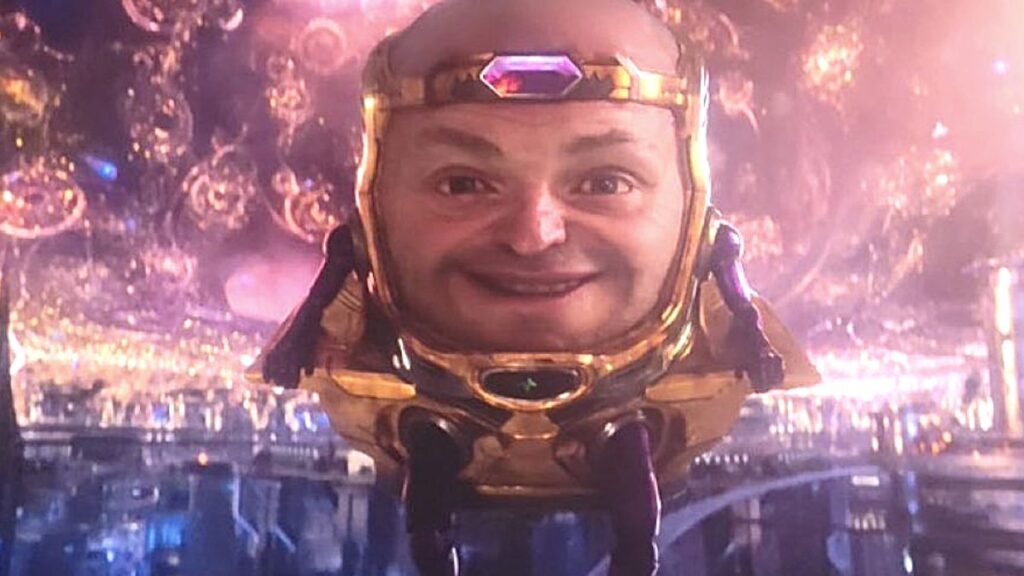
The more interesting bad guy on hand—not more frightening or more cunning, just more striking—is Darren, the foil from the first Ant-Man played by Corey Stoll who has now been transmogrified into a deadly assassin known as MODOK. That sounds scary, but the joke about MODOK (fine, it stands for “Mechanized Organism Designed Only for Killing”) is that he’s ridiculous: a giant, deformed head supported by spindly motorized legs and sporting a flagrantly outsized idea of his own lethality. I’ve seen some tweets mocking MODOK’s peculiar appearance, but those criticisms miss the point; his ungainliness is what makes him funny, and Reed and Stoll together lean into the character’s pathetic delusions of iniquitous grandeur.
Had Quantumania featured more of that playful absurdity, it might have succeeded as a comedy, if not an epic. But where the prior Ant-Man pictures were appropriately modest in their cosmic ambitions, this one feels like Avengers Lite, seeking to tell a bold and sweeping story of repression and rebellion. That’s a problem, because big-budget action isn’t exactly Reed’s strength. I’ve grown tired constantly kvetching about the MCU’s desultory approach to combat, so instead I’ll complain about this movie’s maddeningly inconsistent command of scale. One of the cool things about Rudd’s Ant-Man is that he can wield Hank’s miraculous technology to drastically resize objects (and himself) at will. Reed leveraged that ability well in Ant-Man and the Wasp, but here he’s lost the thread entirely; characters shrink and grow virtually at random, and the kicks and punches they deliver have no sense of spatial authenticity, much less tangible weight.
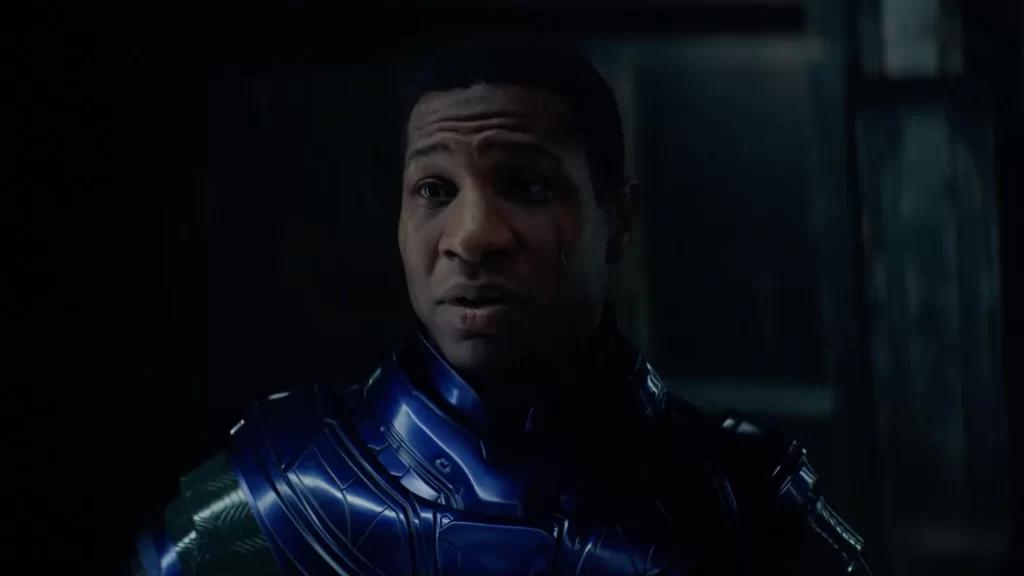
That Quantumania flails as an action picture shouldn’t be especially damaging, given its ensemble of on-camera talent. But the shaky script serves its actors poorly; Lilly has nothing to do, Pfeiffer is oddly one-note, and even the eminently affable Rudd seems to be coasting on his mid-wattage charm. (For his part, Douglas only comes to life when discussing Hank’s army of ants, a risible subplot best left ignored.) The only player who locates the proper balance between arch and engaged is Newton, who gestures toward Cassie’s inner life—her purported activism (something about housing the homeless) is amusingly circumscribed to avoid the possibility of offending any political stripe (thereby ensuring the film’s four-quadrant credentials)—even as she recognizes the enterprise’s utter silliness.
Which might be what’s missing. It’s foolish to call Ant-Man and the Wasp: Quantumania a serious picture, but it flaunts a certain lofty ambition—a pretension of operating as the next Big Superhero Movie—that its predecessors did their best to resist. Normally I’m all for overreaching in blockbuster entertainment, but the Ant-Man films, with their minimal stakes and comic tone, work best as an antidote to the MCU’s glowering supremacy. Quantumania, with its world-changing plot and hectic finale—once again, combatants labor to wield and manipulate pulsating streams of blue light in lieu of actually fighting one another—loses sight of this mini-franchise’s mild, minor appeal. Someone needs to steal Hank’s tech and shrink it back down to size.
Grade: C
Jeremy Beck is the editor-in-chief of MovieManifesto. He watches more movies and television than he probably should.
